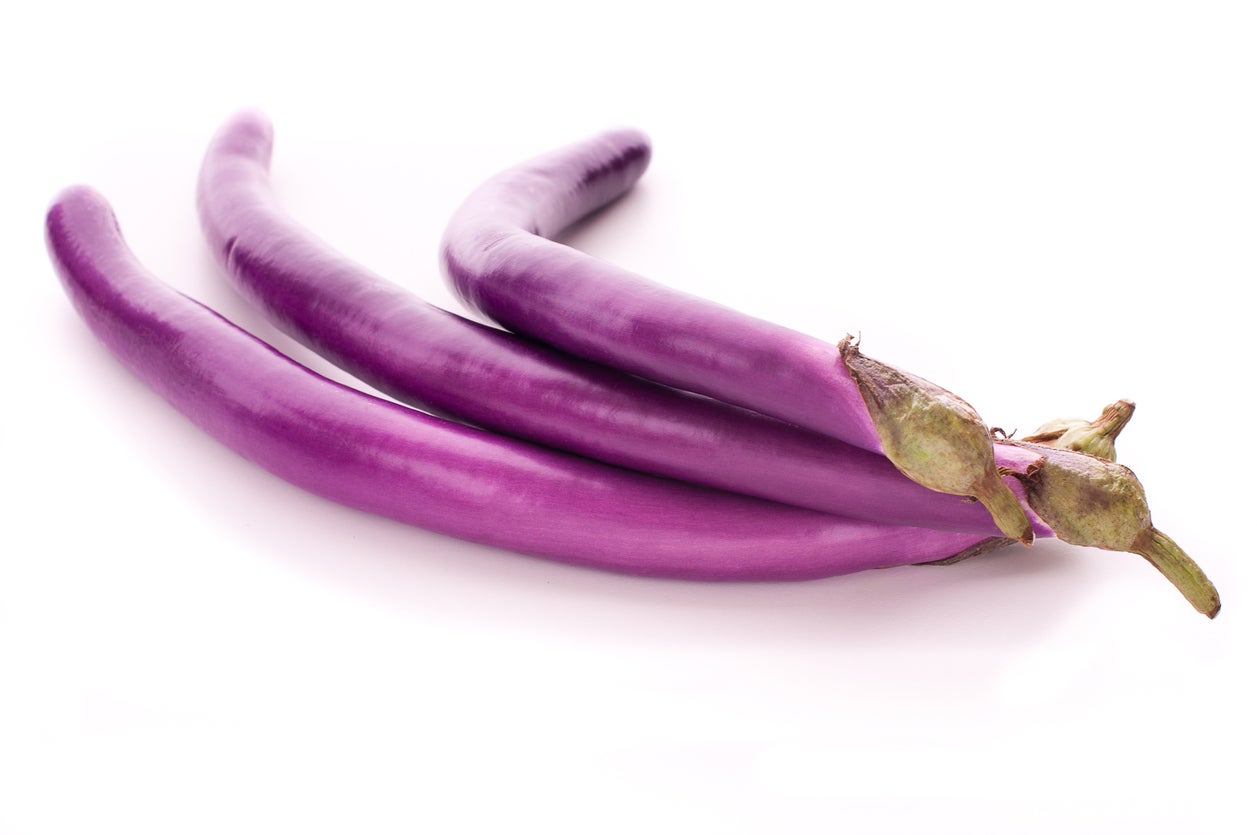Chinese Eggplant Information: Growing Chinese Eggplant Varieties


Eggplants are vegetables from the nightshade family and related to tomatoes and peppers. There are European, African and Asian eggplant varieties, each with different characteristics including size, shape and color. Chinese eggplant varieties are probably some of the oldest of the vegetable.
Eggplants from China tend to be elongated and deeply purple with glossy skin. They are excellent in stir fry and soup. They are quite easy to grow as long as they receive plenty of sun and heat. This article will provide information on how to grow Chinese eggplants and use them once harvested.
Chinese Eggplant Information
Although there may be more, a quick web search turned up 12 types of Chinese eggplant. It is said that the name comes from Europeans who saw white orbs growing in the ground in India, and likened them to eggs. The Chinese cultivars couldn't be more different with striking color and narrow bodies.
The earliest domestic recordings of Chinese eggplants described them as small, round, green fruits. Centuries of cultivation have changed the shape, size, skin color and even the prickliness of the stems, leaves and fruit that wild plants boasted. In fact, today’s eggplant is a smooth, narrow fruit with creamy flesh. It has a decidedly sweet flavor and semi-firm texture.
Eggplants from China seem to all have been developed for the tubular shape. Early Chinese writings document the change from wild, green, round fruit to large, long, purple skinned fruit. This process is well documented in the Tong Yue, a 59 BC writing by Wang Bao.
Types of Chinese Eggplant
There are many hybrids of the typical Chinese breeds. While most are the purple hues, a few have almost blue, white or even black skin. Some commonly available Chinese eggplant varieties include:
- Purple Excel - A high yield variety
- HK Long - An extra long, tender purple type
- Bride - Purple and white, tubular but quite chubby
- Purple Charm - Brightly violet
- Ma-Zu Purple - Slender fruits, almost black in color
- Ping Tung Long - Straight fruits, very tender, bright pink skin
- Purple Shine - As the name suggests, glossy purple skin
- Hybrid Asia Beauty - Deeply purple, tender, sweet flesh
- Hybrid Long White Angle - Creamy skin and flesh
- Fengyuan Purple - A classic Chinese fruit
- Machiaw - Huge fruits, very thick and light lavender skin
How to Grow Chinese Eggplants
Eggplants need fertile, well-draining soil with a pH of 6.2-6.8. Sow seeds indoors in flats 6-8 weeks before the date of the last frost. The soil must be kept warm to ensure germination.
Gardening tips, videos, info and more delivered right to your inbox!
Sign up for the Gardening Know How newsletter today and receive a free copy of our e-book "How to Grow Delicious Tomatoes".
Thin plants after 2-3 true leaves have formed. Transplant them out after the date of the last frost and when the soil has warmed to 70 degrees Fahrenheit (21 C.).
Use row covers to prevent flea beetles and other pests, but remove them when flowers are observed. Some varieties will require staking. Clip off the fruit regularly to promote the set of more flowers and fruit.

Bonnie Grant is a professional landscaper with a Certification in Urban Gardening. She has been gardening and writing for 15 years. A former professional chef, she has a passion for edible landscaping.
-
 Looking For Plants To Give You The Soft And Fuzzies? Try These 5 Fuzzy Leaf Plant Options
Looking For Plants To Give You The Soft And Fuzzies? Try These 5 Fuzzy Leaf Plant OptionsLovers of texture, drama, silver foliage and tactile plants will adore these special sensory garden additions. These fuzzy leaf plant options will leave you all aglow
By Susan Albert
-
 Get Ready For A Summer Of Hummers! Grow These Full Sun Hummingbird Plants and Flowers
Get Ready For A Summer Of Hummers! Grow These Full Sun Hummingbird Plants and FlowersIf you’re lucky enough to enjoy a sunny backyard, make sure you are maxing out on your pollinator opportunities and grow these full sun hummingbird plants and flowers
By Tonya Barnett